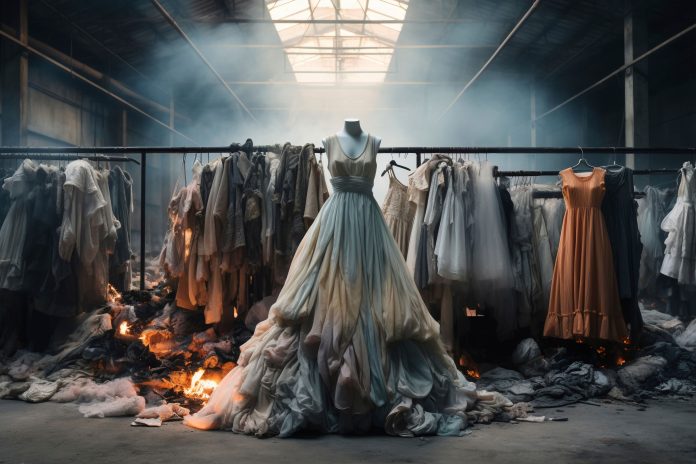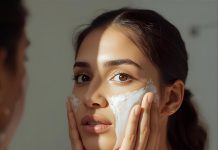Before any outing, we always think about what to wear and try different combinations to style up, Everyone follows the trend and wants to look fashionable and their wardrobe even more stylish than others but have you wondered when it all started? Fashion has always been a vital part of human personality, constantly evolving and reflecting the changing times, cultures, and societal norms. From ancient civilisations to modern-day trends, the fashion world has undergone a fascinating transformation. The origins of fashion take us way back, like the internet, think cavemen, but with more style – or the beginnings of it anyway.
The OG Fashionistas: Ancient Civilizations
Let’s rewind to ancient Egypt, where pharaohs and their squads rocked linen like nobody’s business. Linen was the fabric of choice because of that brutal heat, but it wasn’t just about staying cool. The Egyptians made fashion into a real vibe. They were all about showing off their status, which meant gold jewellery, wigs, and that iconic eye makeup. In Mesopotamia, fashion meant draped fabrics and tassels, and in ancient Greece, it was all about the iconic togas and those delicate pleats.
Whereas in China and India, fashion wasn’t just an accessory but a manifestation. The Hanfu in China wasn’t just worn for aesthetics; it symbolized harmony and connection. This was an immaculate drip with meaning, blending silk with wealth, status, and sometimes even rebellion. In India, the Saree’s origins can be traced back to the Indus Valley civilization! Who knew a six-yard piece of cloth could slay for centuries, balancing daily wear with so much purity? These ancient vibes show that fashion was less about trends and more about flexing your social power, spiritual beliefs and rituals.
Moving to Ancient Rome, the Toga was king, draped in all sorts of elaborate folds that flexed wealth and prestige taking the fashion not into bright colours but in a monochromatic style. It was like they curated their Pinterest board with modesty as the theme. Meanwhile, in Japan, the Kimono was an art form—each layer, hand-stitched pattern, and fabric chosen with the utmost precision. Every detail in ancient Japanese fashion had meaning, whether it was about telling the world you were royalty or just dripping elegance.
The Medieval Magic
Medieval Europe and fashion jump to something more structured corsets, doublets, and all sorts of medieval looks. But it was way deeper than the fashion, it was symbolic of the class hierarchy. If you were royalty or nobility, velvet, fur, and brocade were your go-tos. It became high-key illegal in some places to wear certain colours or fabrics if you weren’t in the top tier of society. Total class divide serving medieval realness.
But here’s where it gets even juicier: fabric, colour, and cut were all social media before social media existed. This era was all about the long sleeves, deep necklines, and crazy headgear to flex social status. People used to wear mini-fortresses on their heads in the form of pointy hats and towering veils. And the layers? Think of them as the medieval mix-and-match challenge. More layers, more wealth and true luxury.
Fashion became more strict when we hit the High Middle Ages around the year 1000. By then, people were even more tuned into what they couldn’t and could wear. If you were out here messing up the fashion rules, you were a walking crime. The upper class became obsessed with silk and dyes, as well as with twill, a diagonal weave that created a lush texture, flexing on anyone who wasn’t on their level. Even the Pope got in on the action, laying down laws about clerical fashion. From clerical restraint to noble power plays, fashion in Medieval Europe was the ultimate flex.
Renaissance to Rococo: The Glow-Up
The Renaissance was the era where swag became art, and art became swag. Shakespeare didn’t just write plays also became the fashion influencer of his time. Just like a Renaissance painting, fashion was all about beauty, expressiveness, emotions, culture and drama. Doublets, ruffs, huge gowns, and capes were the main staples. Tudors like Henry VIII and Elizabeth I used fashion to make political statements, Elizabeth’s white face makeup, for instance, was a power move, and Henry’s broad-shouldered looks shouted masculinity and dominance. These weren’t just rulers; they were the original influencers.
The Rococo era served extra. The wardrobes exploded with the bling and excess of Marie Antoinette and Louis XVI. Think pastel colours, intricate patterns, big-ass wigs, and artificial beauty marks. Society was still hella segregated, but for those in the spotlight, fashion wasn’t just optional—it was everything. The French Revolution flipped the script with the rise of more simplistic, reason-focused outfits. Gone were the elaborately powdered wigs; in came the “dress down” Republic influence that represented liberty, equality, and fraternity. When the revolutionaries took to the streets, fashion was no longer just about flexing your wealth. It was about making a political statement—a trend that has stuck around ever since.
The Arrival of “Fast Fashion”
In the 19th century, the Industrial Revolution didn’t just change the game; it created the game we know today. Before this period, most outfits were made by hand. Rich people got tailored fits, and the working class had to DIY their fits. However, the Industrial Revolution introduced mass production of spinning jennies, sewing machines, and factories galore. Suddenly, clothes were cheaper, and trends could catch fire way faster, where the steam engines fueled the pace of fashion, dropping in some serious speed like an A-list Nascar race.
Victorian fashion took the limelight, leaving behind the simpler, French Revolution-era styles for structured, crinoline-heavy, and corset-loving styles. This was the era when everyone flexed serious silhouettes: hourglass for women, broad shoulders for men. Even though mass production peaked during this time, hand-made, bespoke fashion remained the ultimate exclusivity test. The 1800s also saw the emergence of the first real “fashion designer, Charles Frederick Worth, who hit the scene in Paris and invented haute couture”. He didn’t just dress people; he dictated what they should wear with every drip had layers of meaning, from the choice of fabric to the cut of the gown. By the end of the century, Paris was the fashion capital of the world, and designers were the celebrities. Trends travelled across Europe to America, but everyone knew the French were setting the standard for highly known fashion.
The 90s and 2000s Fashion Spectrum
The fashion landscape of the 1990s had diverse elements, reflecting social, cultural, and technological shifts. Grunge emerged from the Seattle music scene, with loose, worn-out attire popularized by bands like Nirvana and figures such as Kurt Cobain. Simultaneously, minimalism favoured simple, monochrome outfits, influenced by economic challenges and environmental consciousness, championed by designers like Calvin Klein. The 90s also witnessed a revival of retro and vintage styles, drawing inspiration from the 60s mod, 70s disco, and 80s glam. Icons like Madonna and the Spice Girls fueled this nostalgic resurgence. Moreover, the influence of hip hop, originating from communities in New York and Los Angeles, left an indelible mark, popularizing baggy, colourful, and sporty clothing, as seen with artists like Tupac and brands including Tommy Hilfiger. There was a rise in fast fashion in the 2000s. Clothing became more disposable and cheaper. Low-rise jeans and crop shirts took over the fashion industry. Men started wearing streetwear with sneakers and hoodies. There was a comeback of bold prints and neon colours.
The Rise of Streetwear & Insta-Bait
Streetwear is like the underdog that ate the whole game. What started as a niche, underground movement in LA and NYC skaters in the 1980s, streetwear turned into a worldwide phenomenon by the 2010s. Big players—think Supreme, Off-White, and, of course, Yeezy—broke down the walls between high fashion and what was once deemed casual wear, streetwear didn’t just influence fashion; it became a lifestyle. From Run D.M.C. rocking Adidas sneakers to Virgil Abloh redefining just what high fashion could mean, streetwear hasn’t just been about the ‘fit but about culture itself.
And then came Insta-bait fashion, with those lewks that aren’t just worn—they’re curated for that fire ‘gram post. The hashtag-driven, double-tap-inducing fashion broke the internet with the developing trends at breakneck speed, Balenciaga’s sock sneakers, the Gucci belt, bike shorts, and oversized everything. Fashion is no longer limited by geography or gatekeepers; it’s global, it’s democratized, it’s on your feed 24/7. Social media has turned fashion into a participatory event, giving us all a seat at the table.
What’s Next In Fashion?
Nowadays, Fashion is heavily influenced by tech and VR fashion where you’re trying on clothes in the metaverse, or self-cleaning, smart, sustainable fabrics that make your wardrobe last for years, even AI-designed custom outfits that perfectly match your vibe-mood-energy combo on any given day. Sustainability is getting bigger and bigger. Brands are starting to catch mad heat for wasteful practices, and Gen Z ain’t afraid to call them out. Upcycling, thrifting, and eco-friendly production are on the rise—because who doesn’t want to look fly while also saving the planet?
Expect to see more ethical and inclusive fashion movements leading the charge. We’re over fast fashion that trashes the earth, and we’re here for clothes that make a difference. Revolutionary tech will also keep navigating us toward more avant-garde styles—think wearable chargers, climate-adaptive materials, and even fashion for different body types and gender expressions. Fashion is slowly but surely losing its boundaries, its moulds, and its old-school structures and becoming even more strong.
The evolution of fashion throughout history has been a captivating journey, reflecting the social revolutions, cultural influences, and technological advancements. From the old garments of ancient civilizations to the unique designs of AI modern couture, fashion has continuously pushed boundaries and served as a means of self-expression and identity. As the days move, fashion will become more innovative and inclusive trends, showcasing the limitless creativity of designers and the empowerment of individuals to showcase their unique styles, remaining a powerful force, shaping not only our appearances but also the way we showcase ourselves to the world.





























